Joint post-war European combat aircraft projects (part of 6)
In real combat, Tornado was first involved in 1991, during the Desert Storm anti-Iraq operation. The share of the crews of fighter-bombers fell the most difficult tasks of attacking airfields, well-covered anti-aircraft artillery and the fight against Iraqi air defense missiles. Interceptors Tornado ADV also participated in the war, patrolling the airspace over the territory of Iraq and Saudi Arabia and escorting strike vehicles, but they did not shoot down a single Iraqi aircraft.
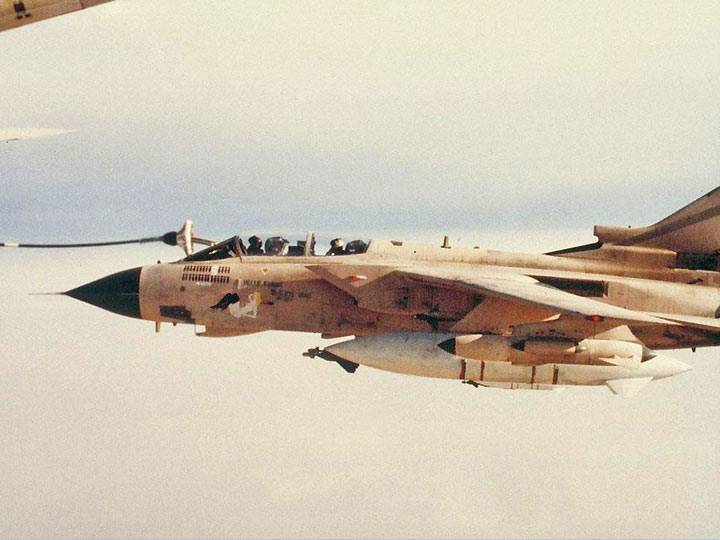
Their warplanes in the conflict zone sent the United Kingdom and Italy. British Tornadoes were based on Tabuk and Dhahran air bases in Saudi Arabia (24 units), Muhharak in Bahrain (24 units). Eight Italian cars flew from the airfield of Abu Dhabi in the UAE.
Non-dropped JP-233 cassettes with anti-aerodrome bombs and mines were used to attack Iraqi air bases, and anti-radar missiles ALARM and HARM were used to combat the air defense system and radar. The destruction of fortified reinforced concrete aircraft hangars, air defense command posts and communication centers was carried out by laser-guided 454 and 908 kg guided bombs.
The first combat mission to bombard Iraqi air bases took place on the night of January 17, 1991. The shock machines were escorted by the Tornado F.3 and F-15C fighters. In this departure, the Tornado suffered no losses. But in the morning of the same day, one Tornado GR.1 from the link sent to the Puybah airbomb was shot down by 57-mm anti-aircraft guns. In the evening, on January 17, another British Tornado was shot down by anti-aircraft guns at an extremely low altitude when attempting to strike JP233 at extremely low altitude. On this day, one fighter-bomber received serious damage as a result of hitting an 23-mm projectile, but managed to reach its airfield.
January 20 was a “black day” for the Tornado, and the British lost three cars when attacking the Iraqi Muharraq airbase. It is believed that one plane crashed as a result of a technical malfunction, one was shot down by an air defense missile system, and another Tornado fell victim to the Iraqi MiG-29.
After this incident, the RAF command revised the tactics of using fighter-bombers. Emphasis was placed on striking American guided bombs with laser-guided Paveway II. Targeting bombs on the target was carried out by ground sabotage groups or from target aircraft. As the last, the British used the obsolete Bukanir bombers hurriedly transferred to the combat zone with American laser-television containers Westinghouse AN / ASQ-153 / AN / AVQ-23 Pave Spike.
Several Tornado GR.1 carried TIALD laser thermal imaging sighting system containers. Due to the presence of the night thermal channel, this equipment was very effectively used in the dark. The dropping of the guided bombs was carried out from a gentle dive in the altitude range 4000-7000 meters.
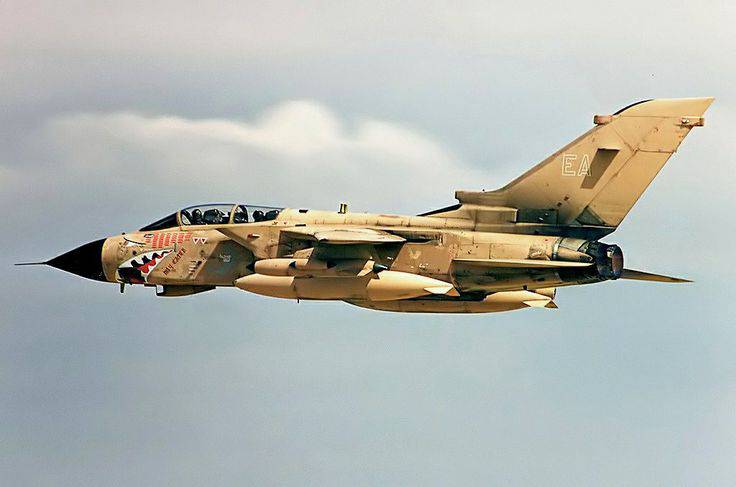
On January 22, in the Al Ratbah area, eight Tornadoes came under fire from 100-mm anti-aircraft guns of the KS-19. As a result, these rare anti-aircraft guns managed to shoot down one plane, and the rest had to quickly get rid of the bomb load. A day later, another British aircraft fell victim to the Osa mobile short-range air defense system during the bombardment of the Euphrates bridge.
The pattern of action has led to the loss of February 14 1991. The day before, six Tornado GR.1 bombers, accompanied by F-15C fighter jets and EF-111 EW aircraft, attacked El-Taccadum airbase. The next combat mission took place along the same route and at the same height, to which the air defense system of the airbase was ready. The Iraqi calculations of the air defense missile system, having detected the approaching planes visually, until the last moment did not turn on the guidance station and suddenly attacked the loaded Tornado bombs from two different positions. As a result, the raid was frustrated, the pilots of fighter-bombers had to drop bombs not precisely and go to a low altitude. However, not all had time to accomplish the evasion maneuver; one aircraft was damaged as a result of a close explosion of an anti-aircraft missile warhead. The pilot tried to escape from the fire, but soon his plane caught up with the second Zur. In this case, the weapon operator was killed, and the commander managed to eject, after which he was captured.
After the end of the campaign, the British officially recognized the loss of eight Tornadoes from the effects of Iraqi air defense. Given the fact that 48 aircraft of this type participated in combat missions, the entire RAF lost 12% of the fleet. Approximately the same loss ratio was among the Italians. Of the 8 fighters-bombers at their disposal, one was intercepted by the Iraqi MiG-23M during the first sortie on the night from 16 to January 17. Italian pilots did not manage to master the refueling in the air and in the future they bombed targets on the leading edge or in the rear of the enemy, using mostly free-falling bombs.
A few more aircraft received serious damage from anti-aircraft fire or crashed when returning to their bases. So, in January 1991 of the year, returning from a night departure, one Tornado GR.1 missed the runway of the Saudi Tabuk airbase. The pilots remained alive, but the aircraft, which received severe damage, was not restored. The badly injured aircraft was dismantled and taken to the UK, where it was stored in the hangar of one of the air bases until 2005.
It was the Tornado that suffered the greatest losses among all types of multinational combat aircraft. There were several reasons for this. In the first days after the start of the anti-Iraqi campaign, the Tornado crews tried to strike from low altitudes, however, they faced strong opposition from small-caliber anti-aircraft artillery. The imperfection of the onboard EW system was revealed, and to cover the drums, the Tornado had to involve the American EF-111A and hang up the jamming stations for escort fighters Tornado F.3. In addition, it turned out that even the unloaded Tornado bombs were unable to carry out anti-aircraft and anti-missile maneuvers with the same intensity as the Jaguar fighter-bombers that did not suffer irreparable losses.
As a result, the British command in the planning of airstrikes switched to flights at medium altitudes. But to maintain performance at the proper level, I had to use expensive managed aviation ammunition, organize additional aircraft cover for electronic suppression, devote a force of forces to combat air defense systems and organize external target designation and additional reconnaissance. Approximately 10% of sorties were disrupted due to failures of sophisticated electronic equipment - air defense systems and electronic warfare systems. The 1991 Iraq campaign revealed the vulnerability of fighter-bombers faced with an air defense system that was not completely suppressed.
At the same time, after the comprehension of the combat experience, the Tornado crews showed high combat effectiveness in the fight against point and fortified targets. These planes played a major role in the destruction of the bridges, along which the Iraqi forces were withdrawn from Kuwait. Also on their account were several bombed out command posts, communication centers and air defense system positions. The command of the RAF in the Persian Gulf zone noted the important role in the search for targets and the planning of air strikes of the reconnaissance mission Tornado GR.1А. The crew of this aircraft performed very risky missions, which ended, however, safely.
But statements about the destruction of dozens of combat aircraft on Iraqi airfields should be treated with caution. Shortly before the start of hostilities along the runway of Iraqi air bases, a large number of defective, outdated and outdated 50-60-x aircraft were set up as false targets: MiG-21F-13, Su-7B, Il-28, Hunter and Tu-Xnumx. It was on them that the air force of the multinational forces fell. Iraqi combat aircraft of combat value: MiG-16M, MiG-23, MiG-25, Su-29, Su-22 and Su-24 were mainly dispersed on secondary airfields in the north of the country and hidden in disguised shelters.
In 1993, the 6 Tornado GR.1, located at the Kuwaiti Air Base Ali Ali Salem (Ali Al Salem Air Base), participated in the maintenance of a no-fly zone over Iraq. According to a report published by the British military, in December 1998, these fighter-bombers destroyed the Iraqi anti-aircraft missile division of an unnamed type as part of Operation Fox Desert. In this case, the "Tornado" was launched 6 SAM from 8 available at the firing position, but the fighter-bombers did not suffer losses. Most likely it was about the C-125.
In 1999, the British, Italian and German Tornadoes participated in the aggression against Yugoslavia. The operation involved shock machines, jammers and reconnaissance. The German Tornado ECR covered the bombers with interference, and also attacked with anti-radar missiles on Serb radars and SAMs, launching AGM-115 HARM 88 missiles. This operation was the last to modify the Tornado GR.1. After that, all British fighter-bombers with a variable sweep wing were converted into GR.4 shock drums and GR.4A reconnaissance aircraft. The experience of hostilities in the territory of the former Yugoslavia forced to expand the range of guided weapons in the arsenal of the British "Tornado".
In the 2000-x aircraft "Tornado" of the German Air Force repeatedly participated in major international exercises, including in the United States. In 2004, the German Tornado IDS imitated the breakthrough of the Russian Su-24М during joint exercises in Alaska.
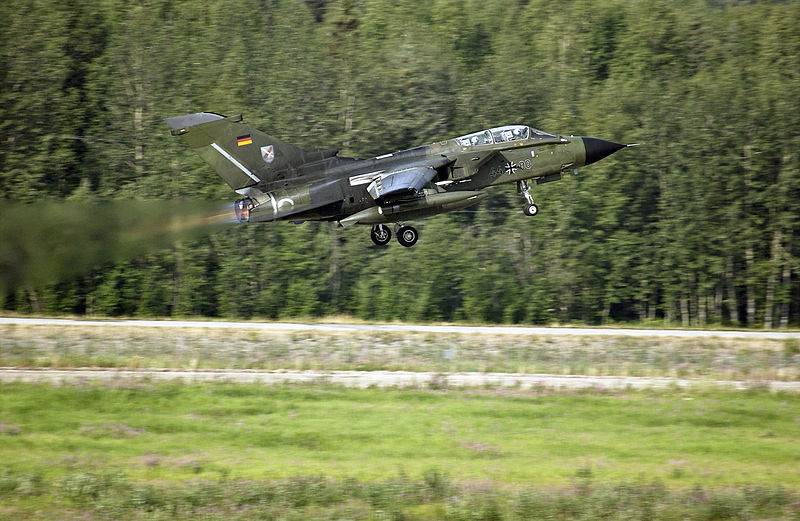
Tornado IDS from the 31 th Fighter Bomber Wings up from Eilson Air Base in Alaska
In 2007, the Luftwaffe aircraft participated in joint maneuvers with American fighters at the center of combat employment of the US Air Force Edwards in Nevada. Testing the combat use of weapons of the Luftwaffe aircraft takes place at an air test site not far from Holloman Air Force Base in New Mexico. Airbase Holloman is a permanent place of combat training of German pilots.
In the 21 century, remaining in-service fighter-bombers took an active part in all sorts of "anti-terrorism" and "peacekeeping" campaigns led by the United States. The British Tornado GR.4 was actively used in 2003 in Iraq, increasing the proportion of high-precision munitions used.
Satellite image of Google earth: fragments of Iraqi Tu-16 and Tu-22 bombers at the Habbaniya airbase
One of the most successful operations of the British Air Force in Iraq is the destruction of the Iraqi airfield of Al-Habbania, where MiG-29 fighters, Su-25 attack planes, Tu-16 and Tu-22 bombers were based. The UAB was able to destroy the steering lanes at the exit from the reinforced concrete hangars and the bombers at the sites with dotted strikes. However, by that time, the Iraqi Tu-16 and Tu-22 had not risen to the air for a long time and had no military value.
If in Yugoslavia, Tornadoes carried about 25% of “smart bombs” of the total weight of a combat load, then four years later in Iraq, this figure increased to 85%. 23 March 2003 of one Tornado GR.4 was incorrectly identified, adopted for the Iraqi combat aircraft and shot down by a Patriot anti-aircraft missile, while both crew members were killed.
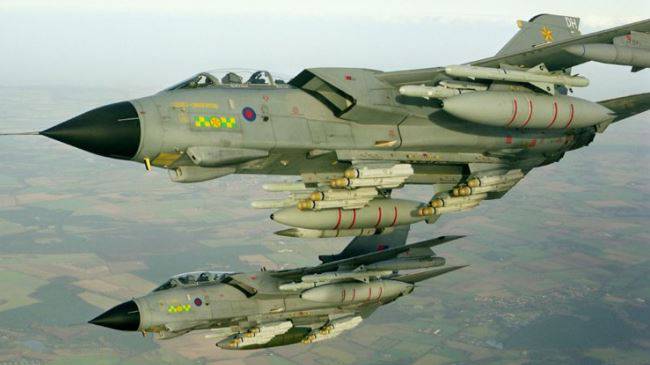
In 2007, six German reconnaissance Tornado ECRs from the 51 nd reconnaissance wing arrived in Afghanistan at the Mazar-i-Sharif airbase. They were engaged in air patrols and carried jamming equipment to initiate radio-controlled improvised explosive devices, which the Taliban laid on the roads in anticipation of NATO convoys.
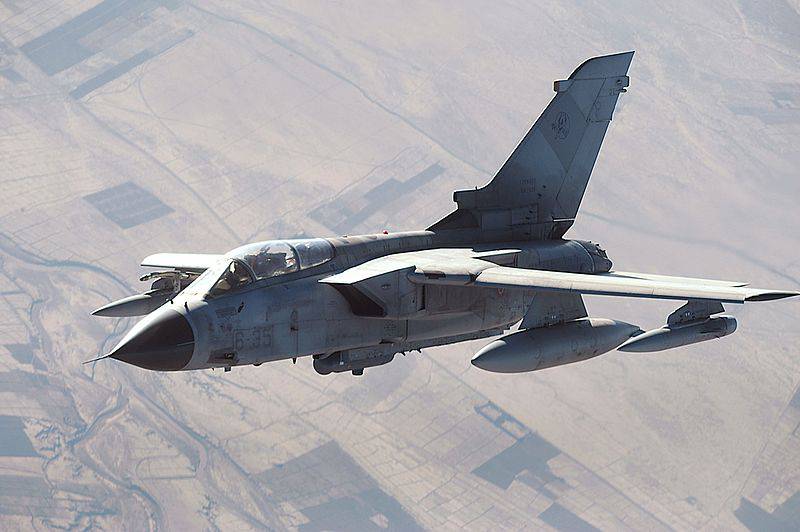
In Afghanistan, the Luftwaffe planes stayed until November 2010. The German Tornadoes in Afghanistan replaced the Italian reconnaissance aircraft Tornado IT-ECR, which carried out similar missions there.
In November 2009, the Tornado IDS of the Saudi Air Force, upgraded to the level of GR.4, first attacked targets in the north of Yemen. Saudi aircraft operate from King Khalib AB air base in the vicinity of Khamis Mushait. This air base is located just a hundred kilometers from the border with Yemen. Since then, fighter-bombers have made dozens of sorties, but their role in air operations is gradually diminishing. This is largely due to the lack of spare parts and aircraft wear. Back in 2010, about a dozen of the most battered Tornadoes became “donors” for the machines that are in the ranks.
Satellite image Google Earth: Saudi "Tornado" at Tabuk airbase
According to Military Balance 2016, RSAF has more than Tornado 60 drums, but much of the machines are at the limit of operational life and at the moment their flight intensity has decreased. Saudi air forces are in the process of re-equipment, F-15SA are considered the main strike machines, and Tornado is being prepared for decommissioning. It is reported that the first Saudi Tornado ADV was written off in 2007 year. Instead of modernizing aging interceptors, RSAF preferred to purchase Eurofighter Typhoon fighter jets in the UK, and retired fighters were returned to the manufacturing company.
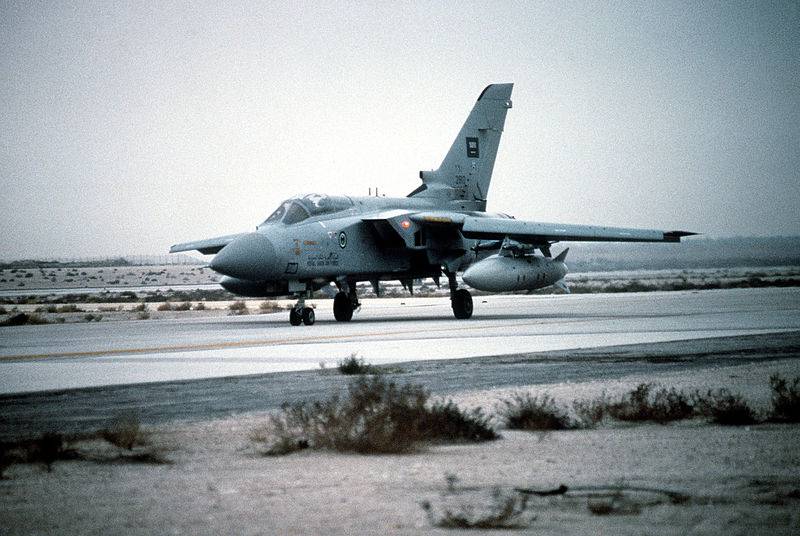
At the beginning of 2009, several Tornado GR4 arrived at the Kandahar airfield in Afghanistan to replace the Harrier GR.9 7 VTOL, deployed there since November 2004. In operations against the Taliban, the British "Tornado" actively used UAB Paveway IV. In the summer of 2010, the Tornado group in Kandahar was reinforced with several more strike machines. British fighter-bombers completed their operations in Afghanistan in November 2014, making more than 600 sorties.
18 March 2011, British Prime Minister David Cameron announced that Tornado and Typhoon will control the no-fly zone over Libya. In the air strikes on the Libyan objects also involved the Italian "Tornado". Aircraft of the Air Force of Great Britain and Italy operated from air bases in Sicily and Malta. In some cases, refueling was carried out from the US Air Force KS-135. A total of "Tornado" used about 700 guided bombs and missiles. First of all, objects of the Libyan air defense system and airfields, which were under the control of government forces, were destroyed.
In August 2014, the British Tornado GR4 joined the American raids against the Islamists in Iraq. Initially, these were only reconnaissance flights, but from the end of September 2014 to March 2015, British bombers carried out 159 shock missions. Since December, 2015, British aircraft has been hitting targets in northern Syria.
In December, 2015, Germany sent several intelligence Tornado ECRs to participate in the actions of the US coalition against terrorists in Syria. The reconnaissance aircraft, accompanied by the military transport A-400M with 40 military personnel aboard December 10, arrived at the Turkish NATO base Incirlik AB. According to information published in the German media, the Tornado fighter jets of the Russian Space Forces (FYU) of the Russian Federation accompanied several times during their flights over Syria.
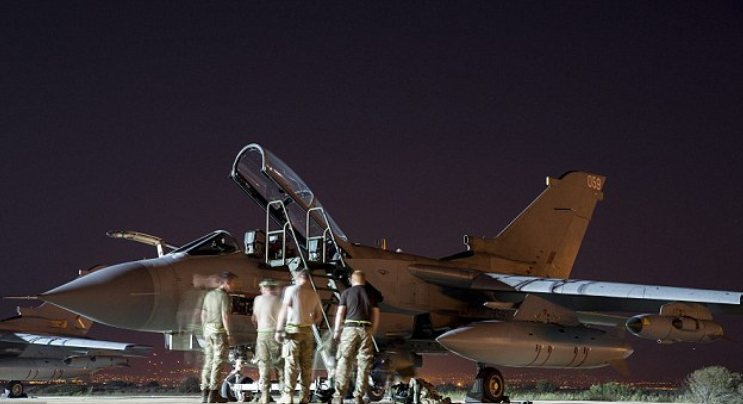
Last summer, information was published that the Tornado GR.4 fighter-bombers and the UAE Reaper fighter planes hit several targets in northern Iraq. They provided air support to Iraqi government forces in the Fallujah 22-25 area of June 2016. The next day, Tornado planes destroyed the terrorists' bunker in western Iraq with Storm Shadow cruise missiles.
Refueling in the air Tornado GR.4 from the aircraft Airbus A330 MRTT Voyager
It was the first known case when the British Air Force used the MBDA Storm Shadow missiles in combat conditions. RAF aircraft operating in Iraq are based at the Akrotiri AB base in Cyprus. During the sorties from Cyprus, the fighter-bombers refueled in the air from the Airbus A330 MRTT Voyager tanker aircraft.
Satellite image of Google earth: Tornado GR.4 and Eurofighter Typhoon aircraft at Akrotiri airbase
In November, 2014, Italy announced the deployment of four Tornadoes in Kuwait at the Ahmed Al Jaber Air Base airbase for reconnaissance flights over Iraq. Although the intelligence aircraft themselves weapons did not carry and did not directly participate in the air strikes, their contribution is difficult to overestimate. Intelligence from the upgraded Tornado IT-ECR in real-time via a closed channel were transmitted to the American coordination center, deployed in Kuwait at the Ali Salem airbase (Ali Al Al Airm Base) and used in the planning and coordination of the shock missions of the American F-16C / D fighter jets A-10C attack aircraft.
Satellite image of Google earth: Italian reconnaissance aircraft Tornado IT-ECR and US F-16C / D fighters and A-10C attack aircraft at Ahmed El Jaber airbase
The Tornado fighter-bomber with variable wing geometry, created at the end of 70's, left a noticeable mark on stories aviation, and he still plays an important role in the air forces of NATO countries. Before the advent of the Eurofighter Typhoon, it was perhaps the most advanced European-made combat aircraft in service with NATO. However, to assess it uniquely is very difficult. The “tornado” in the long-range interceptor of air defense was not widely used due to its modest maneuverability and high cost of living. A fighter-bomber, equipped with perfect avionics and powerful strike weapons, was very expensive to manufacture and operate.
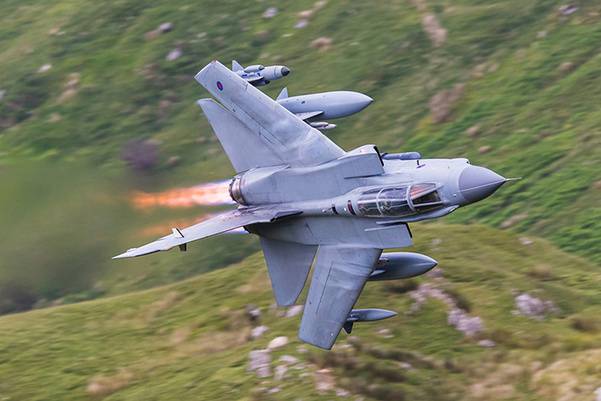
It can be stated that the hopes of the NATO strategists regarding the possibility of unhindered action, flying at low altitude, under the conditions of a developed Soviet air defense system in Europe were not justified. A much weaker Iraqi air defense system managed to inflict significant losses on the Tornado squadrons deployed in the Persian Gulf, and this despite the complete air supremacy of the anti-Iraqi coalition aviation and total supremacy in EW assets. The airborne electronic jamming systems of the British Tornado GR.1 were not effective, and low-level shots were stopped by anti-aircraft artillery. As a result, "Tornado" under the cover of American fighters and aircraft of electronic warfare struck from medium heights. It is clear that much simpler and cheaper bombers would have coped with this.
The British after the “Storm in the Desert” made the appropriate conclusions and were the first among other countries-operators of this aircraft to begin the modernization of their “Tornado”. However, by that time, the military-political situation in the world had changed: after the collapse of the “Eastern Bloc” and the Soviet Union, the risk of a global armed clash in Europe was reduced to a minimum. However, unlike other European strike machines - the Jaguar and Alpha Jet, the British Air Force, the Federal Republic of Germany and Italy did not abandon the Tornado, having invested a lot of money in upgrading the aircraft. This was made possible thanks to a significant airframe resource and a large modernization potential of the aircraft, the production of which was completed in 1993.
But everything comes to an end, and the time of this “relic of the cold war” is over. Already, Tornado ADV interceptors are universally decommissioned. In the RAF, fighter bombers plan to write off after the 2019 of the year, as F-35 Lightning II arrives. In the Federal Republic of Germany and Italy, the aircraft will last longer, at least, no replacement for reconnaissance and jamming companies is expected. The last date for decommissioning is called the 2025 year, by which time most of the aircraft will have worked out their life. But now with the combat readiness of the Tornado in the Luftwaffe everything is far from perfect. Because of all sorts of faults, about a quarter of the planes are chained to the ground. In the Bundestag, the opinion was repeatedly expressed that considerable financial resources directed at maintaining old cars could be channeled to social needs. However, the Americans are opposed to this, since the German Tornadoes are carriers of the American B61 nuclear bombs, which are still stored in the Federal Republic of Germany.
Продолжение следует ...
Based on:
http://www.aeroflight.co.uk
http://www.aerospaceweb.org/aircraft/fighter/tornado_adv/
http://www.aeroflight.co.uk/types/international/panavia/tornado/Tornado_IDS.htm
http://www.urbanghostsmedia.com/2016/02/mrca-panavia-tornado-prototypes-pre-production-aircraft-raf/
http://www.globalaviationresource.com/reports/2011/gulfwar20th1.php
http://www.dailymail.co.uk/news/article-2723326/UK-bomb-Iraq-fanatics-says-Fox-Ex-Defence-Secretary-calls-RAF-join-US-blitz-Islamists.html
- Linnik Sergey
- Joint post-war European combat aircraft projects (part of 1)
Joint post-war European combat aircraft projects (part of 2)
Joint post-war European combat aircraft projects (part of 3)
Joint post-war European combat aircraft projects (part of 4)
Joint post-war European combat aircraft projects (part of 5)
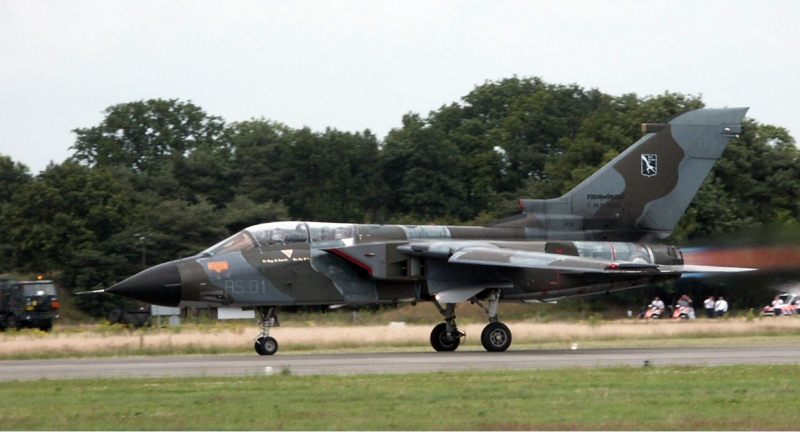
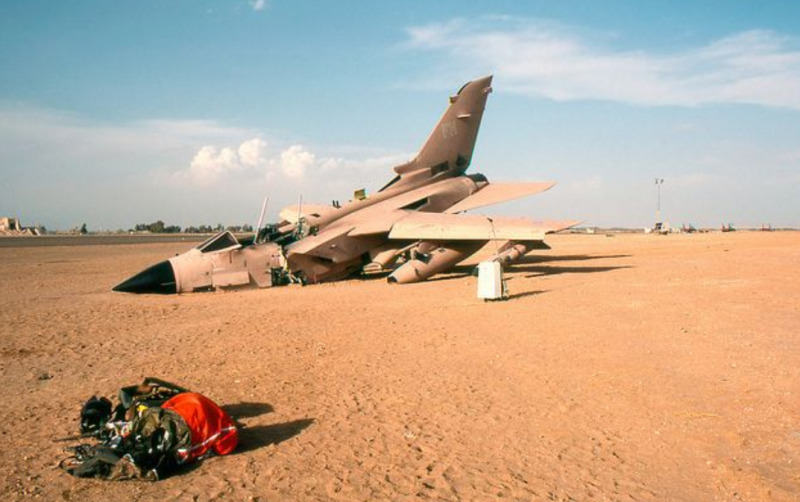
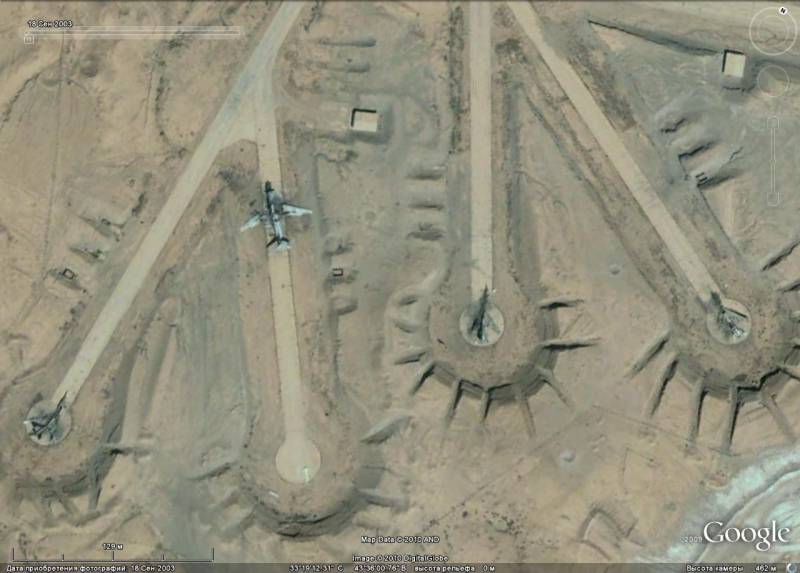
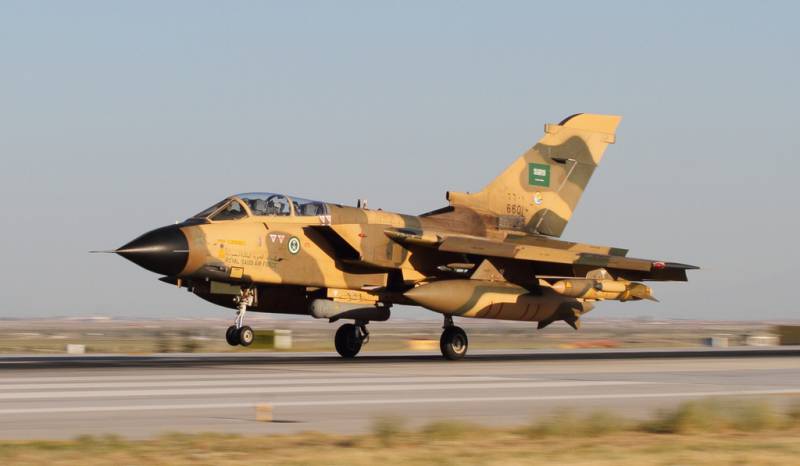
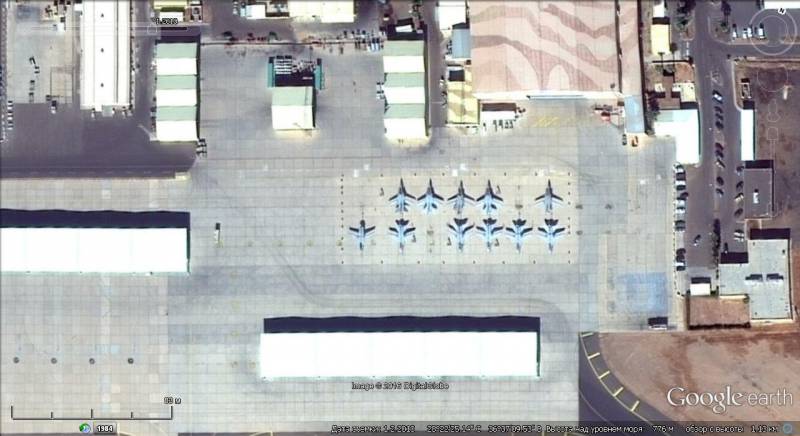
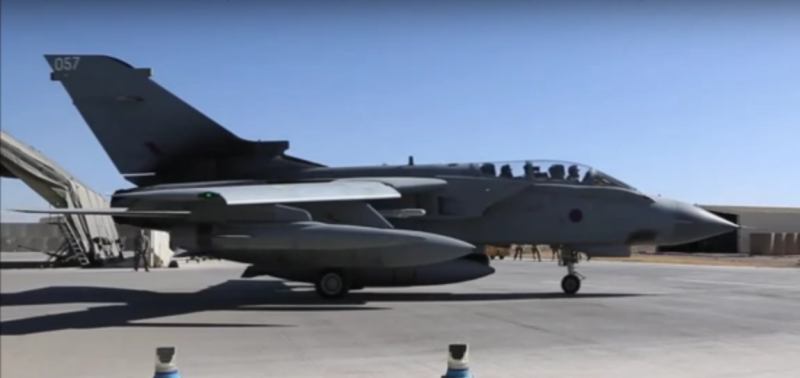
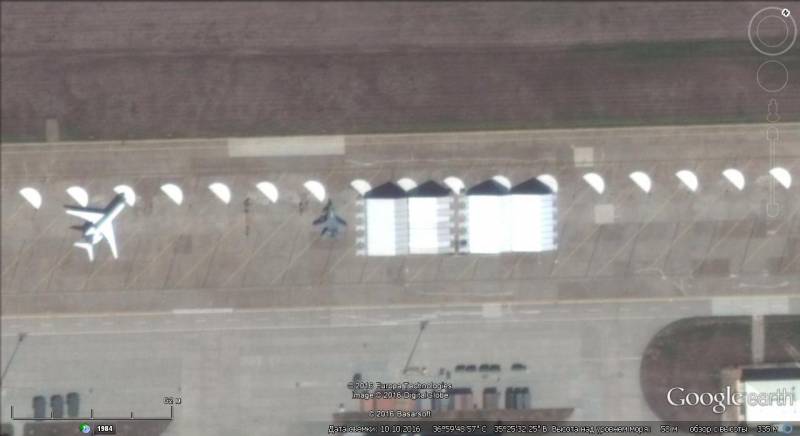
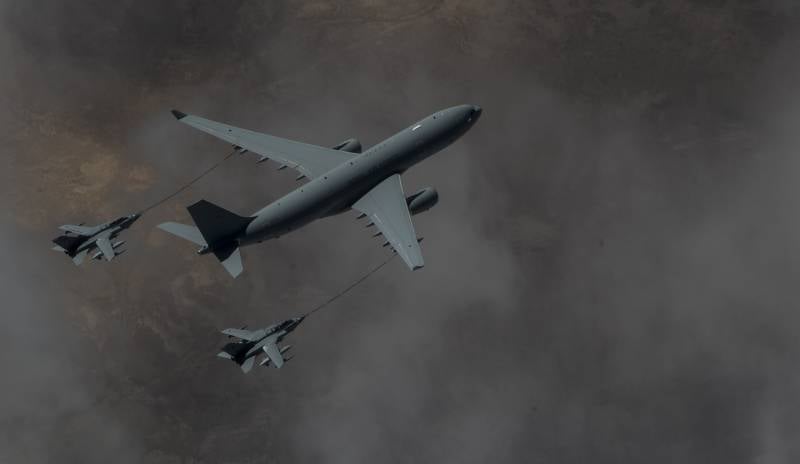
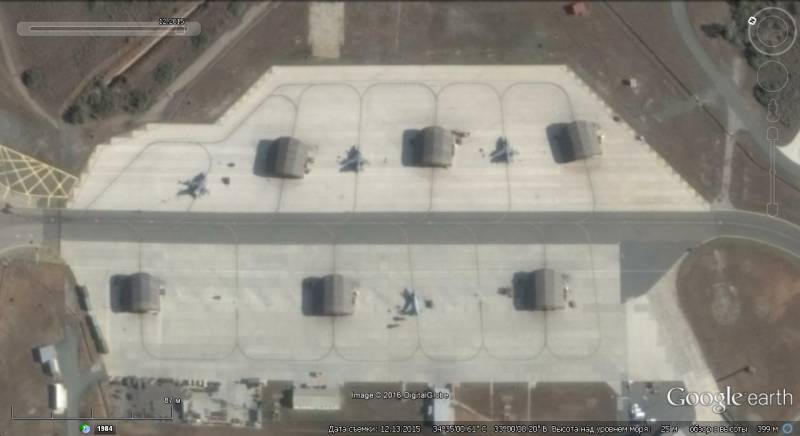
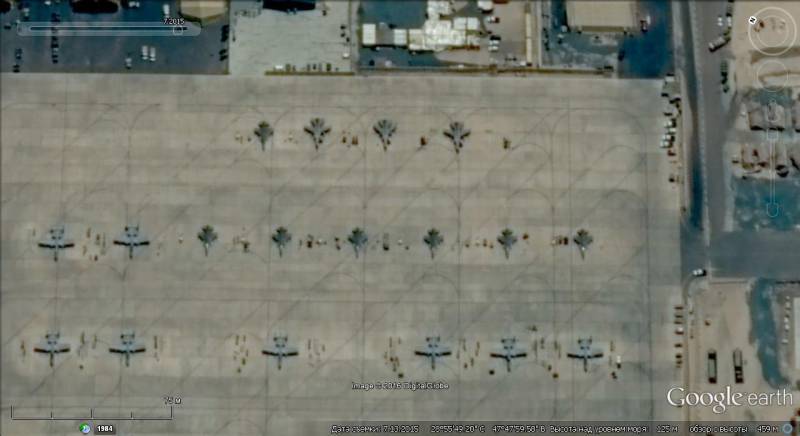
Information